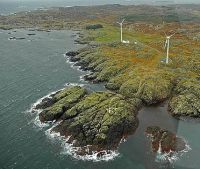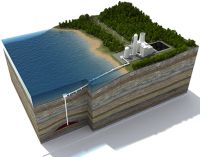 Just a fortnight after Scottish Power unveiled its plan to capture CO2 at Fife, Norway follows the suit to explore the North Sea. This time it’s all embracing since the project aims at sequestering the entire Europe’s carbon emissions underneath the sea bed. The project will encompass each nation’s carbon emissions and the storage potentials. The go-getting plan was almost finalized by the North Sea Basin Task Force at the Bergen Conference last month. The proposed site is somewhere in the Utsira deep saline formation and is potent enough to store up to 600 billion ton of carbon emissions. It will be a $200 million project jointly ventured by the UK and the Nordic country.
Just a fortnight after Scottish Power unveiled its plan to capture CO2 at Fife, Norway follows the suit to explore the North Sea. This time it’s all embracing since the project aims at sequestering the entire Europe’s carbon emissions underneath the sea bed. The project will encompass each nation’s carbon emissions and the storage potentials. The go-getting plan was almost finalized by the North Sea Basin Task Force at the Bergen Conference last month. The proposed site is somewhere in the Utsira deep saline formation and is potent enough to store up to 600 billion ton of carbon emissions. It will be a $200 million project jointly ventured by the UK and the Nordic country.
Why Utsira?

Despite some valid concerns raised on Utsira’s suitability as the projected site, this sequestration site still is comparatively safer. This subsea geological formation is supposed to engulf the harmful emissions satisfactorily. Norway has done it 13 years ago and, this time even, it could go on to mimic what it has been doing in transporting and storing CO2 subsea from an onshore, liquefied natural gas plant. Besides, Statoil started storing carbon dioxide in the North Sea’s Utsira formation underneath the Sleipner oil field platform. Given that this location has proved itself in times of yore, it has sequestered 11 million tons of CO2. Hence, aptness of the spot is hardly an issue.
Why environmentalists frown at the prospects?
Demonstrably, what environmentalists oppose is the intent to invest in CCS rather than investing in renewable energy. They believe that the oil-rich Norway is procuring the license to pollute while compensating for it through this geo-engineering technique. Greenpeace raised concerns over the safety of storing CO2 beneath the Utsira formation, as any leakage will adversely affect the marine life. In addition, none could ever be sure on the permanence of the injected CO2 and seismic mapping isn’t accurate enough.
CCS at a glance:

Image Source: Treehugger
Carbon capture and storage (CCS) nullifies the fossil fuel emissions from large point sources such as power plants. This geo-engineering technique stores the scrubbed CO2 away from the atmosphere either in geological formations, in deep oceans or as mineral carbonates. Among these sequestration sites, geological formations are the safest. Still, it poses a threat to the ocean organisms and none could ever be sure whether it remains there forever. Long-term predictions about submarine or underground storage security are very difficult and uncertain and CO2 might leak from the storage into the atmosphere. It might also go on to increase the acidity of ocean water.

